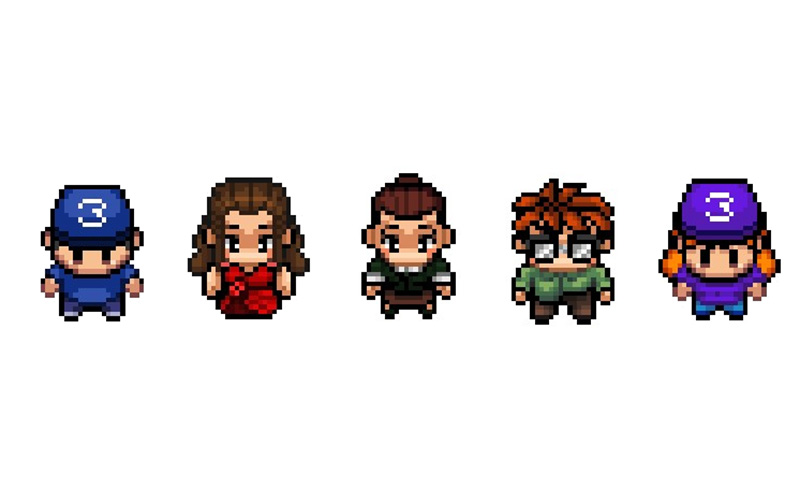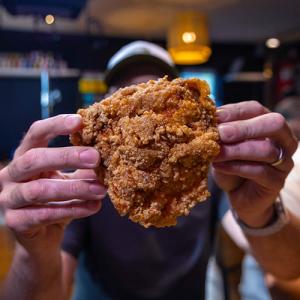
Building a virtual gathering space
A year ago at this time, none of us would have imagined the role that technology and virtual environments would play in our lives and especially in our learning environments.
A year ago at this time, none of us would have imagined the role that technology and virtual environments would play in our lives. From Zoom, Skype, FaceTime, and more, connecting has demanded creative problem solving for all of us — especially in our learning environments.
That is exactly what was needed for the most recent Julia Robinson Math Fest, directed by Assistant Teaching Professor Rita (Duong) Than and Professor Jennifer Quinn in a virtual online learning space.
This annual tradition at UW Tacoma began three years ago through the efforts of Than, though the idea was planted in 2015 at the University of Colorado, Denver. While she was getting her master’s degree, Than volunteered at a Julia Robinson Math Fest for K-12 students. “I was really struck by how much of a festival this event was. It was so much fun exploring different types of problem solving for the games, and students even brought their friends with them,” said Rita. “When I came to UW Tacoma a few years later, I knew I wanted to do the same thing.”
From there, Rita knocked on a lot of doors from Tacoma to Seattle to make this festival happen, securing both supporters and funding. “We’ve had so much support from so many of the faculty and math student volunteers that have made this festival possible, especially this year when we’ve had to shift from in-person events to virtual,” said Rita.
Wanting to continue to facilitate the lively atmosphere that marks Julia Robinson Math Festivals around the country, Rita and Jenny knew that they would need to move past the Zoom calls that have become so commonplace. That’s when Quinn found gather.town, a virtual gathering space that mimics some of the nostalgic memories of computer games like Minecraft or Stardew Valley.
“When we were doing the original planning, we had wanted to do something hands-on like chalk puzzles on campus sidewalks,” said Than. “Of course, with the pandemic, coming to campus wasn’t really an option. That’s when we were connected to BrieAnna Bales [UW Tacoma Director of Events & Sponsorships], who helped us to move some of our ideas into a virtual reality.”
One of the aspects of gather.town that makes it such a unique space for virtual events, is the ability to create custom spaces to simulate the experiences of in-person events. Quinn, who was the plenary speaker at the second Julia Robinson Math Fest in 2008, grabbed the bull by the horns and started learning the ropes of virtual building. Using the floor plan of William W. Philip Hall, where the Math Fest is usually hosted, she recreated it as a virtual space that even included pictures of the view from the windows. “Once I had the floor plan, I put it into Photoshop and started choosing wall and carpet colors that would feel familiar,” said Quinn.
Milling around in the virtual Philip Hall on the day of the event, you would hardly notice the difference between some of the typical events on campus with the buzz of chatter around you and the images of downtown Tacoma from the windows. You could even run into people for spontaneous conversations, call out prize winners to an audience, and play games like Set, Sudoku, and the Tower of Hanoi together.
Reflecting on the process of building out the space, Quinn noted, “One of the biggest challenges in creating the virtual space was understanding the sizes of everything to get the right scale—but once I had that down, I decided to recreate virtual versions of the second floor of the Snoqualmie Building, where the TLC is located, and the third floor of McDonald Smith where our faculty offices are located.” Both of these areas on campus typically serve as spaces for students to study in and meet with professors to ask questions — something that many have been missing while learning and teaching from home.
“I think having a more personal way to connect is really important for all of us, just running into people while you’re wandering around in gather.town is so energizing,” said Quinn. In fact, Quinn has experimented with holding classes in gather.town, and both Quinn, Than, and the TLC are planning on how to use it Winter quarter.
“By increasing autonomy of movement, we can increase engagement. It becomes possible to have think-pair-share activities where students turn to their neighbors, rather than waiting for the creation of random breakout rooms,” said Quinn.
While it can feel like there is no true replacement for the in-person interactions and conversations that we’re used to, experiments with technology like gather.town provide options for faculty and students to connect.



